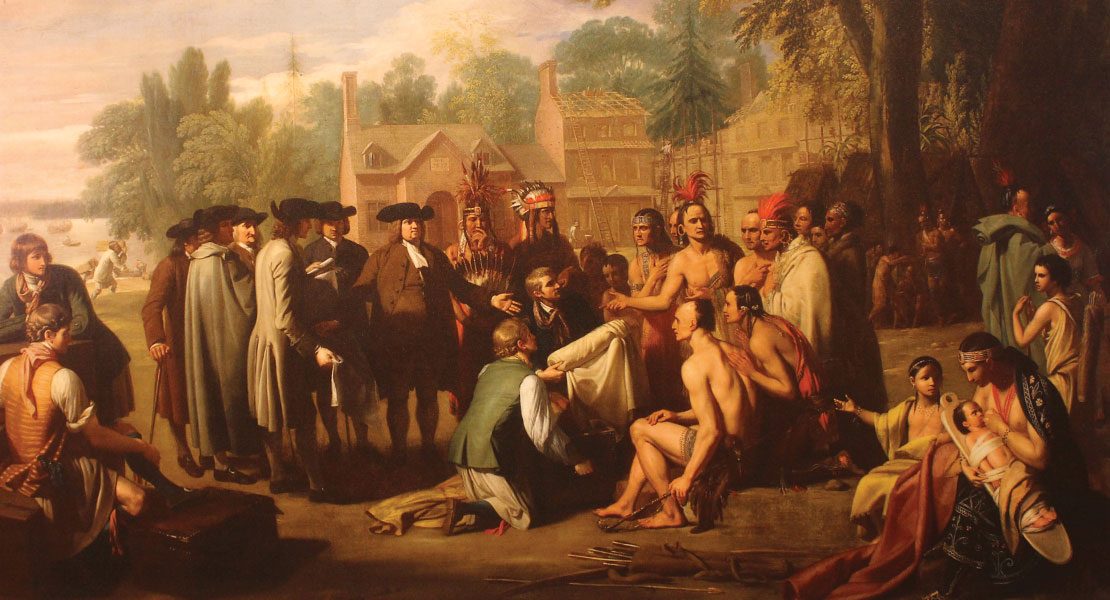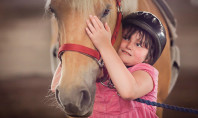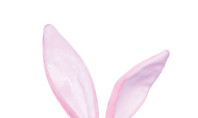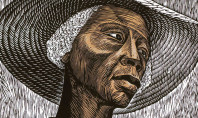Lenape Cultural Center

An exhibit at the Lenape Cultural Center in Easton is writing a chapter our history books have omitted. It illustrates the dramatic tale of a people who have lived here in secret for generations before coming forth with their story.
Until recently it was generally believed that all but a few Lenapes were driven westward from Pennsylvania after the shameful Walking Purchase of 1737 when the sons of William Penn betrayed them, stealing their land.
But, the truth is, many remained in hiding here and in New Jersey, southern New York and northern Delaware. Some were children of earlier German-Lenape marriages. Fearful of being taken from their homes by the government, they went into hiding.
They had reason to be wary. In the 1760s the Commonwealth was still paying a bounty for “pursuing, taking, killing and destroying Delawares and Shawnees” – and that included babies, according to the Pennsylvania Gazette. White settlers had to produce scalps or skins to collect their pay.

The Lenape Women
The Lenapes were a matriarchal society. They turned to the women of the tribe to carry on their legends and traditions, passed from generation to generation by clan mothers. Shelley DePaul carries that banner. DePaul, education chief of the Lenape Nation Council of Pennsylvania, said what has happened to her people has brought them to a time of revival and restoration of the Lenape culture.
Carol Kuhn of Easton, is a clan mother and acts as a docent at the center as well as at the Sigal Museum that houses an impressive Lenape exhibit. “The Lenape women were the educators; they made sure the children understood the culture and followed the traditions,” she explained.
Both of her grandmothers were Lenape descendants, she said, and even into the 1950s feared they would be discovered and forced from their homes. “The Lenapes were a gentle and peace-loving people,” Kuhn said.
They turned to the women of the tribe to carry on their legends and traditions, passed from generation to generation by clan mothers.
She displayed a doll one of her grandmothers had given her when she was 10 years old. “I was an only child and I spent a lot of time with my grandmothers. They pumped me full of knowledge about the Lenapes,” says Kuhn. The doll looks simple enough, but it was a powerful teaching tool. Its yarn hair hides a second secret face on the back meant to remind the child never to speak to others of her heritage. The doll was only one reminder of her Lenape ancestry.
The Lenapes, she said, guarded their secrets in many ways. They learned to disguise their medicine bags, for example. The medicine bags were used not for medicines but to carry small items of personal interest to them – a special pebble or a feather, little treasures. They also embroidered or stenciled special designs easily recognized by another of the tribe but whose significance was unknown to the general community. They even adapted some of those designs to resemble Pennsylvania Dutch symbols.
The Exhibit
To celebrate the history of the Lenape tribe, the cultural center is now housing an impressive exhibit: Fulfilling a Prophecy: The Past and Present of the Lenape in Pennsylvania.
The centerpiece of this exhibit is a giant elk-skin drum. “Six or eight men would sit in a circle around it and drum together,” said DePaul, who co-curated the exhibit with Lenape Nation Chief Robert Red Hawk Ruth.
The exhibit features objects from the private collections of Lenape people in Pennsylvania and they have never been displayed before. It includes Lenape garments, snowshoes, jewelry, wampum, beads made from polished clam shells and all sorts of family heirlooms and artifacts. Docents at the center, which is open Saturdays from 11 a.m. until 3 p.m. will explain the artifacts’ meanings and uses.
It was first shown at the University of Pennsylvania’s Museum of Archaeology and Anthropology in 2008 and 2009. In 2011 the exhibit opened at the cultural center, which occupies the second floor of the historic Bachmann Publick House at Second and Northampton streets.
The center’s library, which contains books, photographs, audio visual resources and selected documents from the Lenape Nation archives, is open for research. The children’s corner includes musical instruments, Lenape games, storybooks, computer language programs, coloring pages and crafts. General admission is free and donations are voluntary.



















